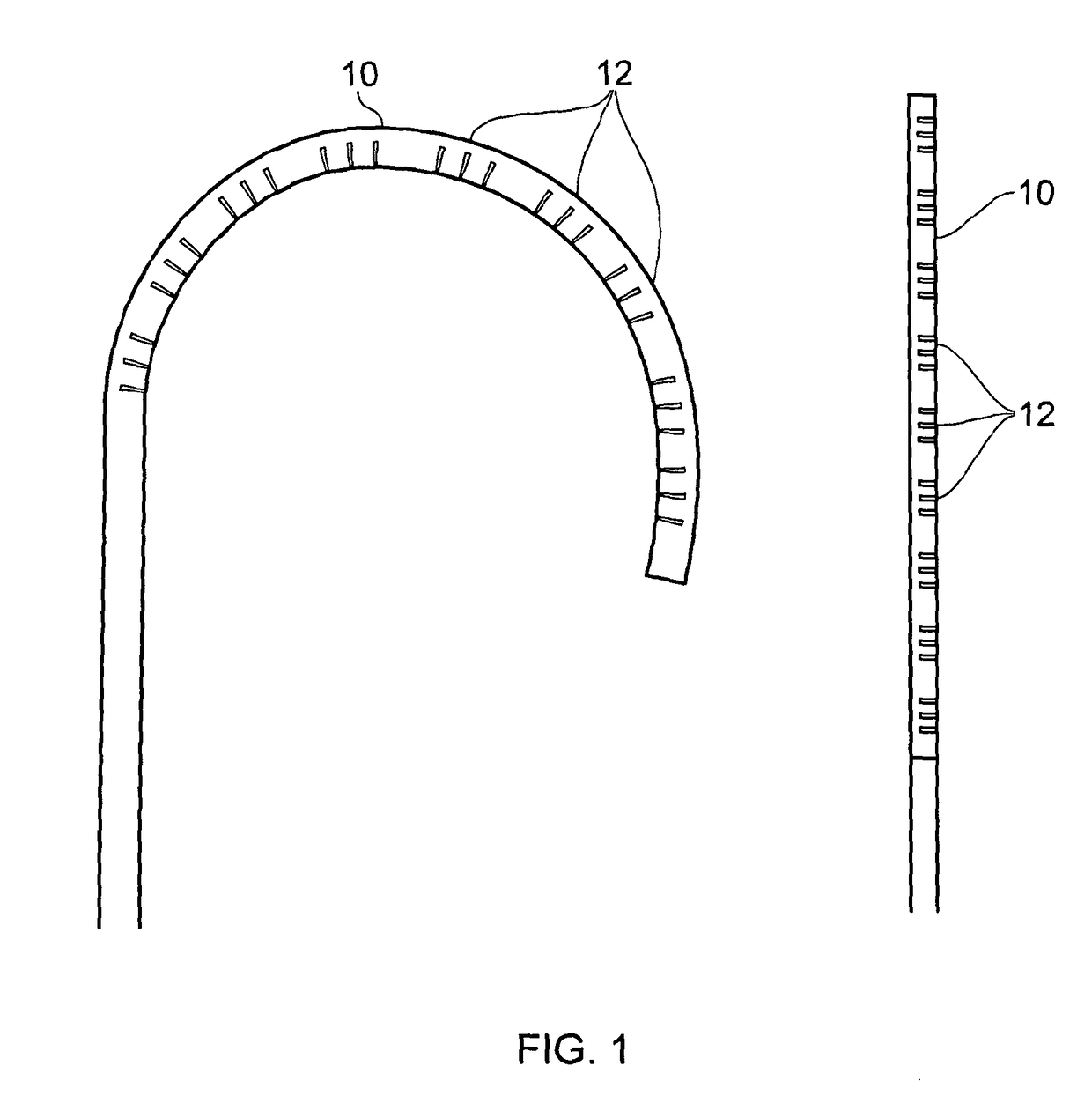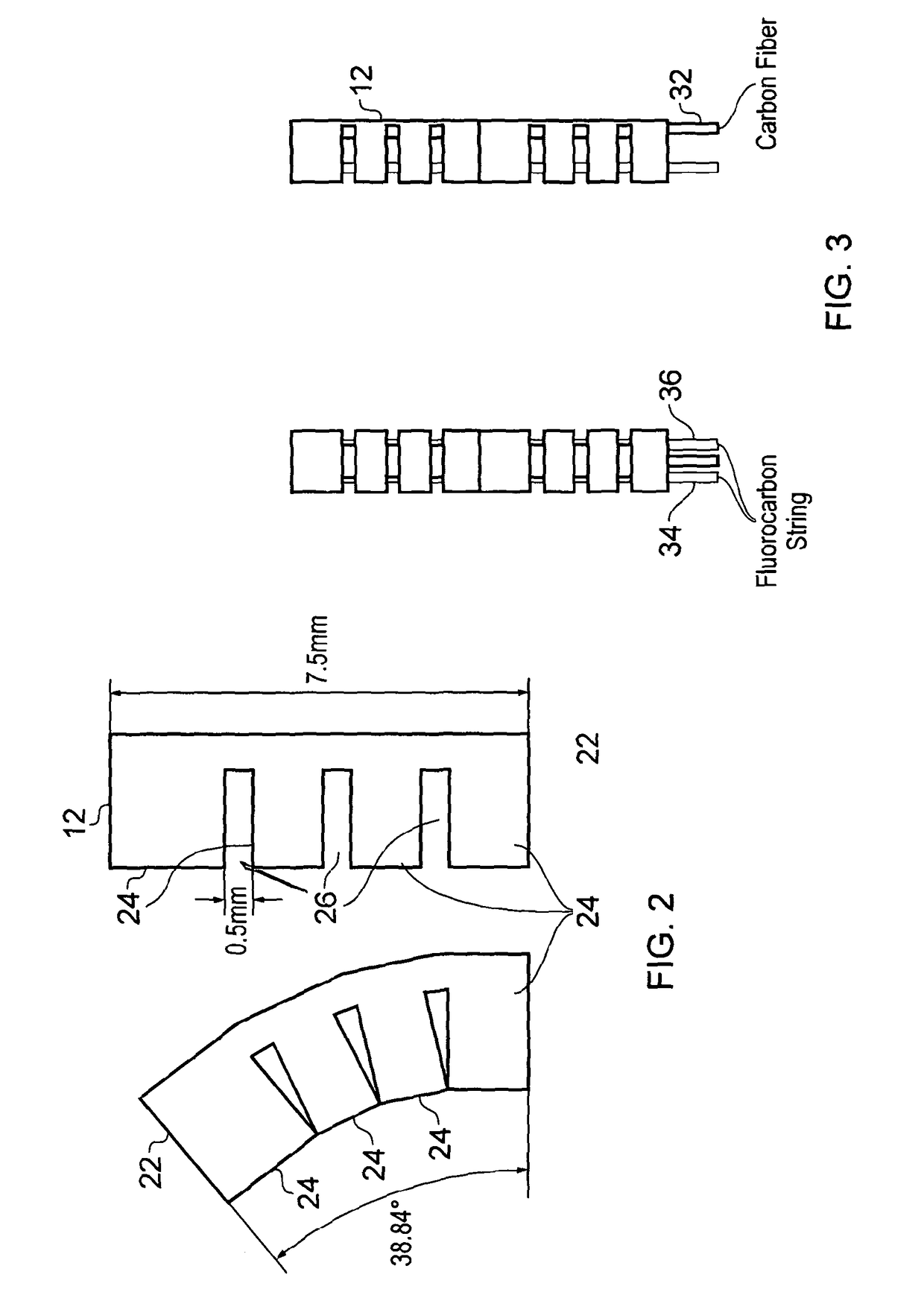Continuum manipulator
a technology of manipulator and bending plate, which is applied in the field of continuous manipulator, can solve the problems of reducing limiting the freedom of conventional catheters, so as to improve the repeatability of bending, prevent unwanted twisting of the tip of the stack, and reduce the effect of hysteresis
- Summary
- Abstract
- Description
- Claims
- Application Information
AI Technical Summary
Benefits of technology
Problems solved by technology
Method used
Image
Examples
first embodiment
[0039]the present invention will now be described with respect to FIGS. 1 to 7.
[0040]The first embodiment of the present invention provides a continuum manipulator in the form of a steerable catheter tip 10, as shown in FIG. 1. The steerable catheter tip 10 is shown in the left hand photograph of FIG. 1 in a bent configuration, and in the right hand photograph in an unbent configuration. The steerable catheter tip 10 is formed from nine individual and interconnecting segments 12, which are effectively stacked one on top of the other along the long axis of the catheter tip to form a continuum structure. The number of segments may vary depending on application to enlarge or shorten the steerable length. Each segment 12 contains integral tendon channels through which steering or guide tendons of the catheter pass, as well as a backbone channel for a carbon fibre backbone, as will be described later. In operation, the steering tendons can be manipulated either by hand, or by robot, to c...
second embodiment
[0051]the invention will now be described with respect to FIGS. 8 to 11.
[0052]FIG. 8 shows two photographs of a continuum manipulator in the form of a steerable catheter tip according to the second embodiment of the invention. In particular, the catheter tip 80 is again formed from individual stacked segments 82, as shown in more detail in FIG. 9. The individual stacked segments 82 stack one on top of each other using a male and female mating arrangement, and the catheter tip can bend in any direction from the straight position shown in the photograph on the left hand side of FIG. 8, to a bent configuration shown in the photograph on the right hand side of FIG. 8.
[0053]As mentioned, FIG. 9 shows respectively top and bottom perspective views of a segment 82 of the catheter tip 80. Each segment 82 is generally cylindrical in shape, but arranged in a helical configuration. In particular, each segment 82 is arranged as a hollow cylinder with a lumen channel 830 running along the centre ...
PUM
 Login to View More
Login to View More Abstract
Description
Claims
Application Information
 Login to View More
Login to View More - R&D
- Intellectual Property
- Life Sciences
- Materials
- Tech Scout
- Unparalleled Data Quality
- Higher Quality Content
- 60% Fewer Hallucinations
Browse by: Latest US Patents, China's latest patents, Technical Efficacy Thesaurus, Application Domain, Technology Topic, Popular Technical Reports.
© 2025 PatSnap. All rights reserved.Legal|Privacy policy|Modern Slavery Act Transparency Statement|Sitemap|About US| Contact US: help@patsnap.com



